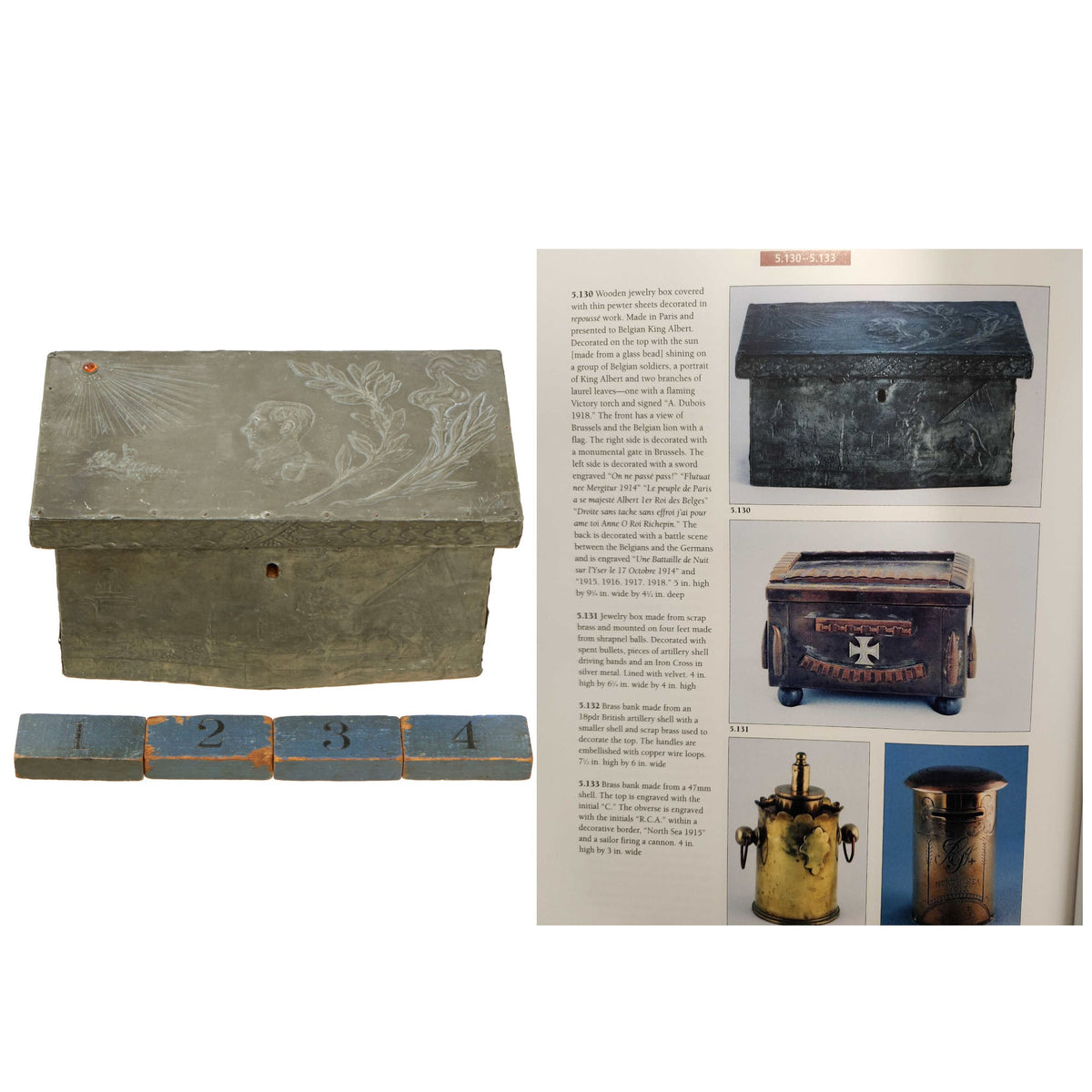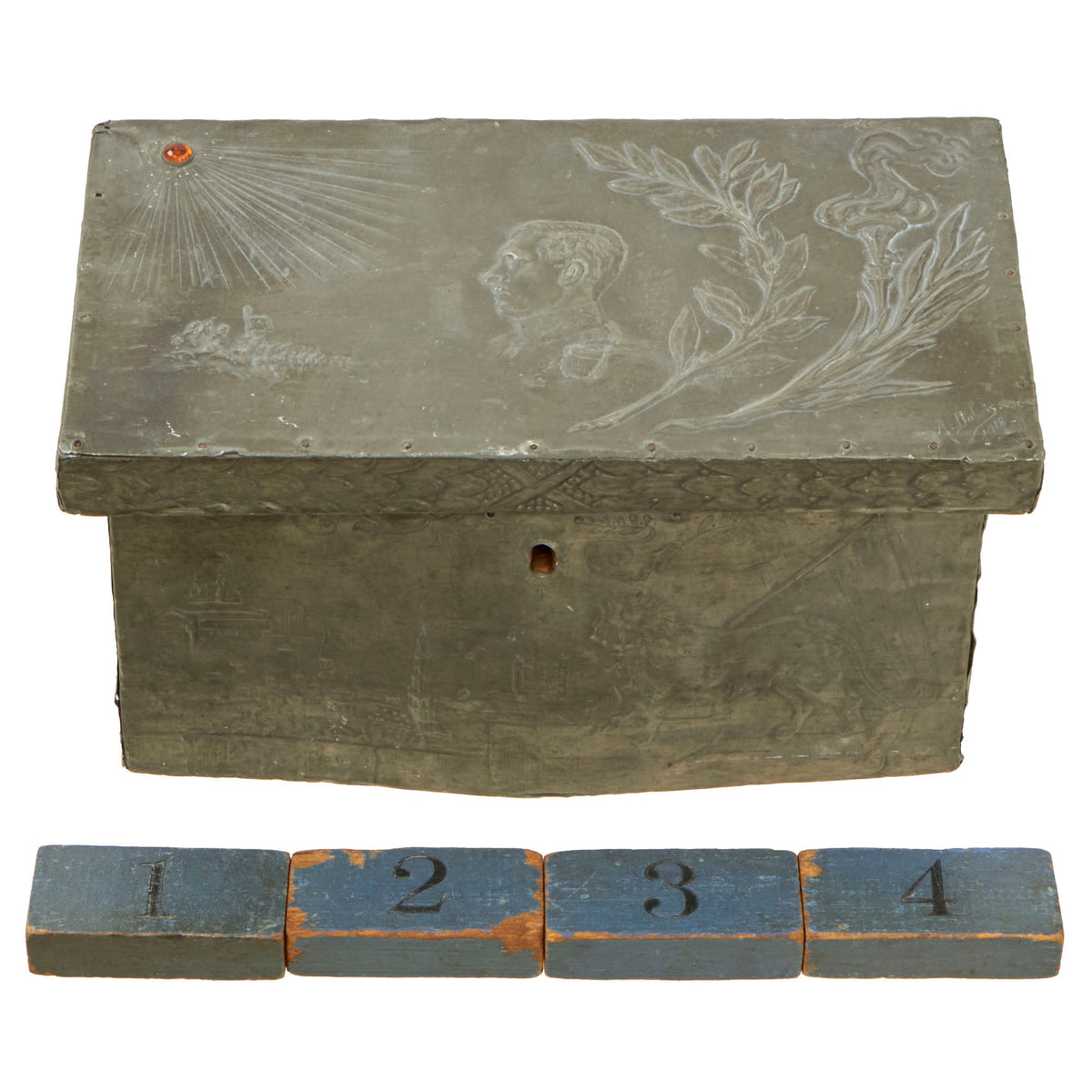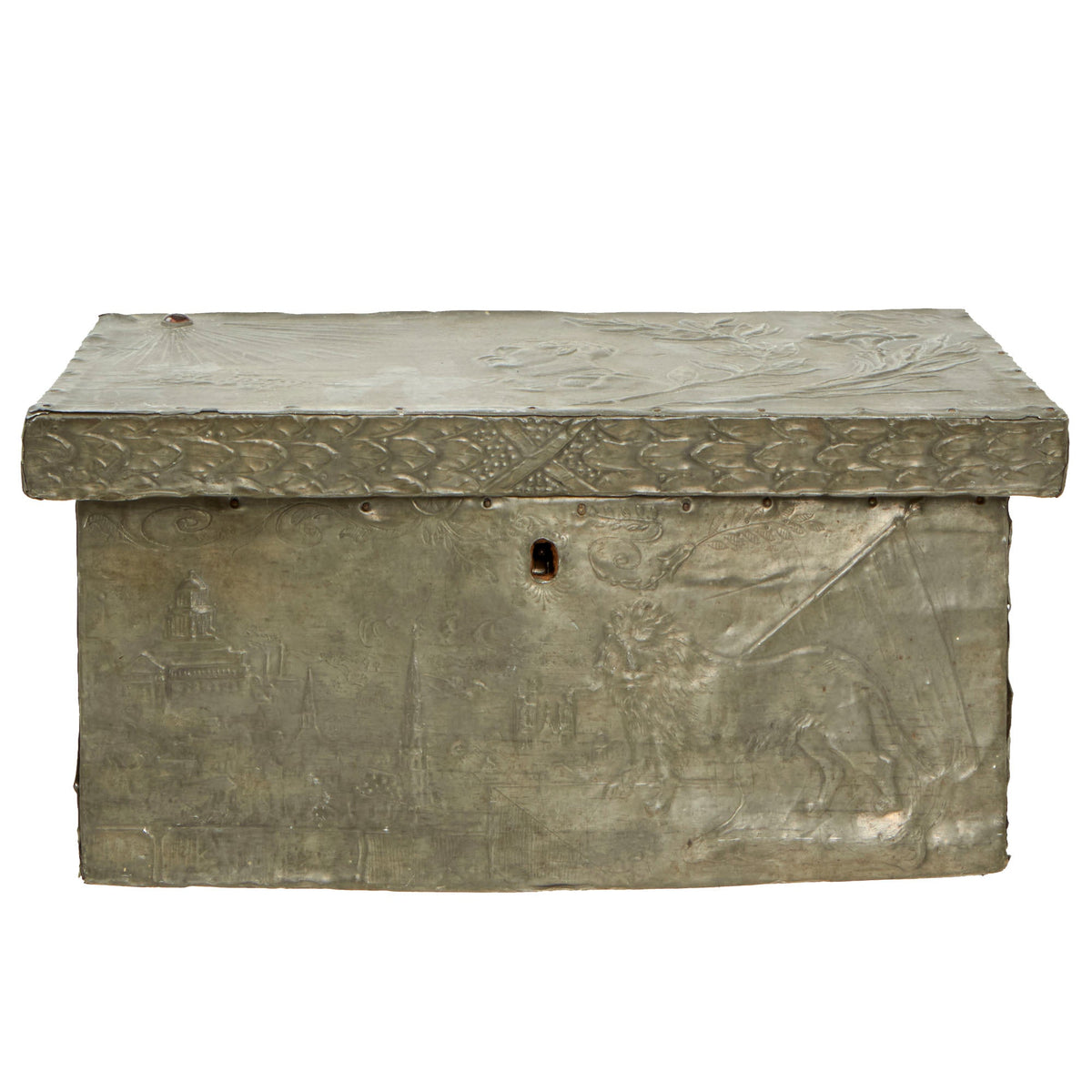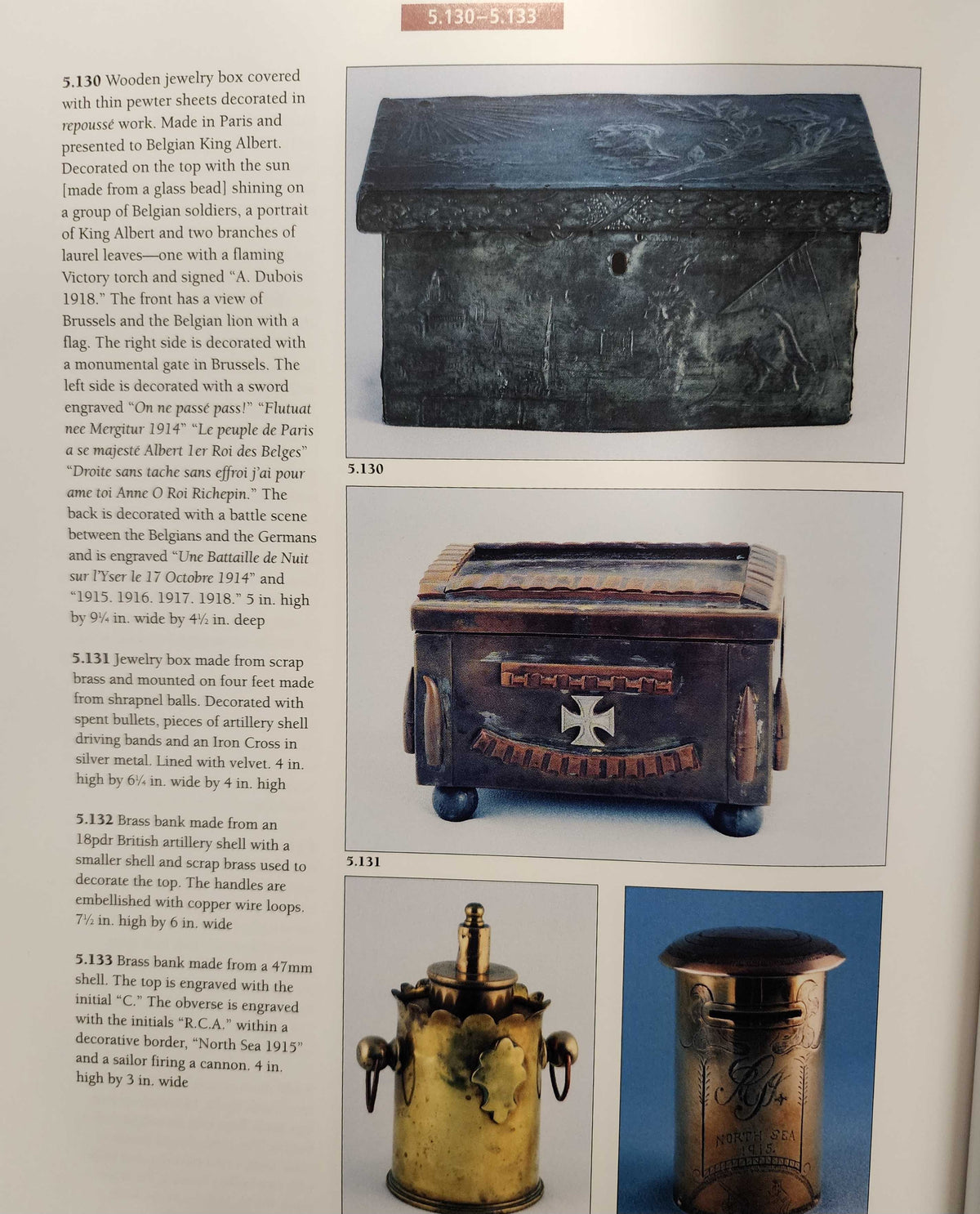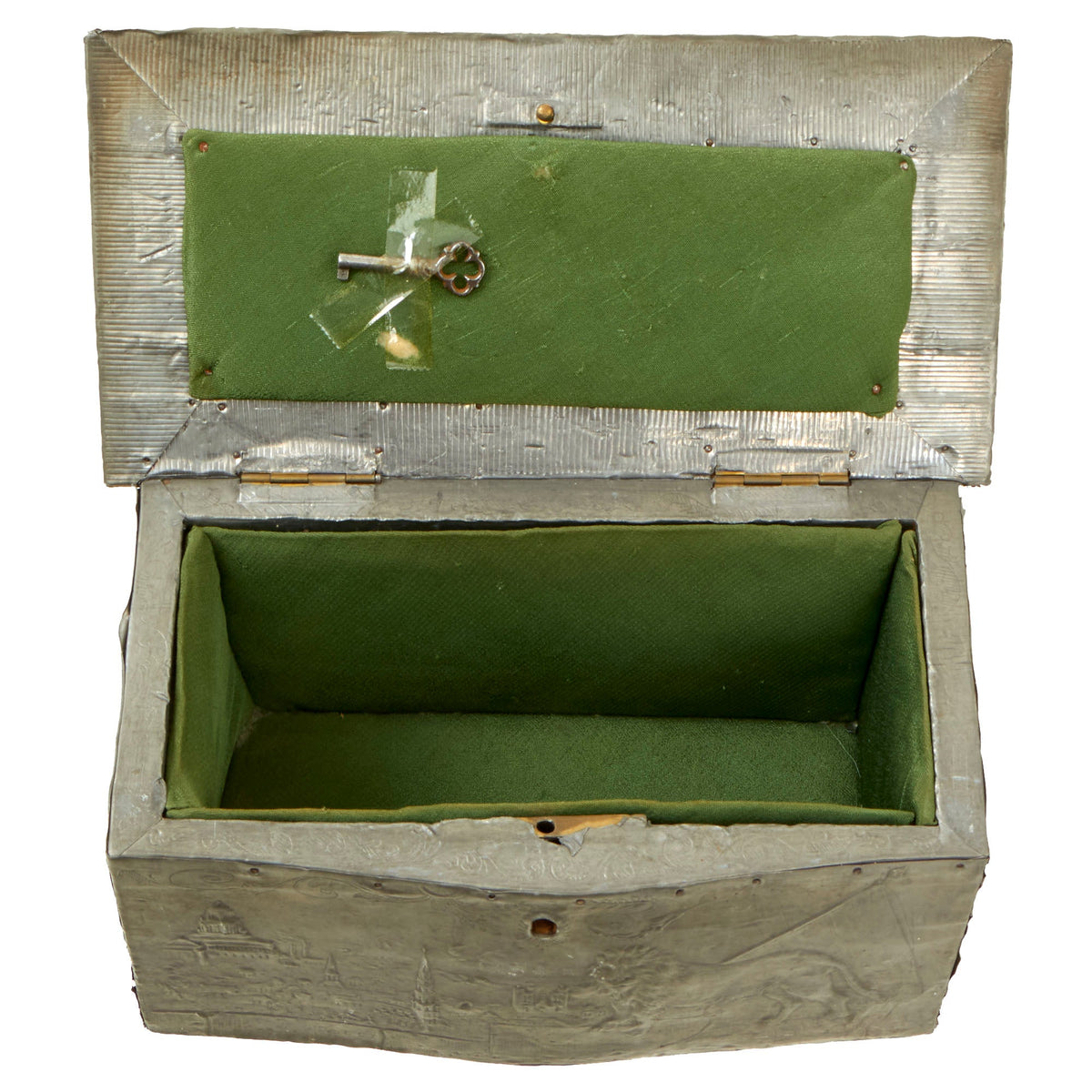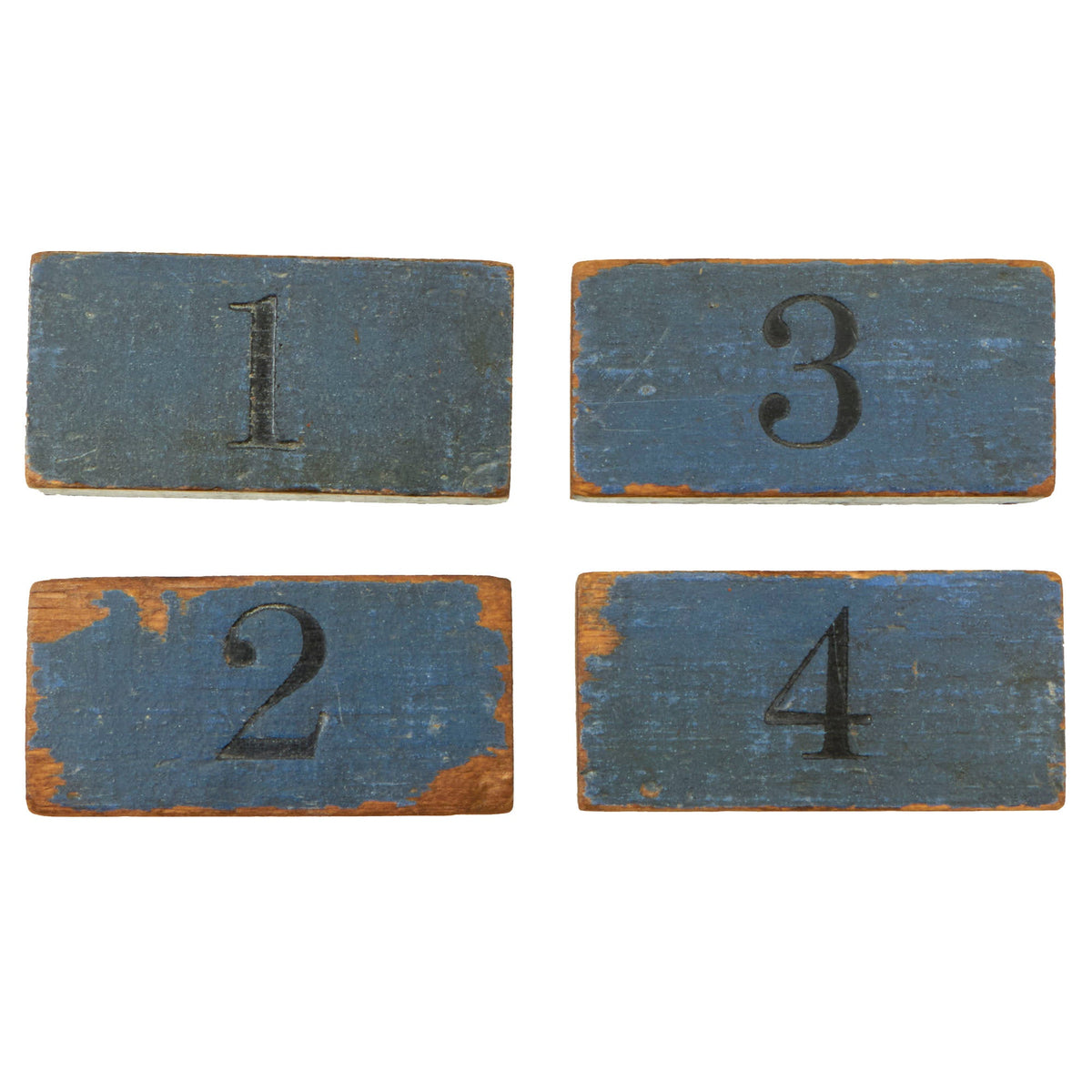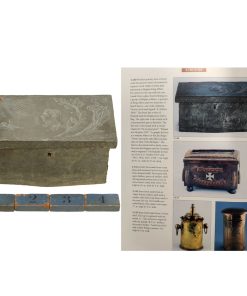Original French WWI French Made Repoussé Pewter/Wood Belgian King Albert Commemorative Chest With Key – Featured In The Book “Trench Art, An Illustrated History” by Jane Kimball on Page 188 Original Items
$ 295,00 $ 118,00
Original Item: Only One Available. Trench art is any decorative item made by soldiers, prisoners of war, or civilians where the manufacture is directly linked to armed conflict or its consequences. It offers an insight not only to their feelings and emotions about the war, but also their surroundings and the materials they had available to them.
Not limited to the World Wars, the history of trench art spans conflicts from the Napoleonic Wars to the present day. Although the practice flourished during World War I, the term ‘trench art’ is also used to describe souvenirs manufactured by service personnel during World War II. Some items manufactured by soldiers, prisoners of war or civilians during earlier conflicts have been retrospectively described as trench art.
The trench art was done by a French soldier as a commemorative item for Belgian soldiers. Featured In The Book “Trench Art, An Illustrated History” by Jane Kimball on Page 188 which has the following description:
“Wooden jewelry box covered with thin pewter sheets decorated in repoussé work. Made in Paris and presented to Belgian King Albert. Decorated on the top with the sun [made from a glass bead] shining on a group of Belgian soldiers, a portrait of King Albert and two branches of laurel leaves-one with a flaming Victory torch and signed “A. Dubois 1918.” The front has a view of Brussels and the Belgian lion with a flag. The right side is decorated with a monumental gate in Brussels. The left side is decorated with a sword engraved “On ne passé pass!” “Flutuat nee Mergitur 1914” “Le peuple de Paris a se majesté Albert ler Roi des Belges” “Droite sans tache sans effroi j’ai pour ame toi Anne O Roi Richepin.” The back is decorated with a battle scene between the Belgians and the Germans and is engraved “Une Battaille de Nuit sur l’Yser le 17 Octobre 1914” and “1915. 1916. 1917. 1918.” 5 in. high by 9% in. wide by 4½ in. deep”
A lovely example ready for further research and display.
Fast Shipping with Professional Packaging
Thanks to our longstanding association with UPS FedEx DHL, and other major international carriers, we are able to provide a range of shipping options. Our warehouse staff is expertly trained and will wrap your products according to our exact and precise specifications. Prior to shipping, your goods will be thoroughly examined and securely secured. We ship to thousands clients each day across multiple countries. This shows how we're dedicated to be the largest retailer on the internet. Warehouses and distribution centres can be located throughout Europe as well as the USA.
Note: Orders with more than one item will be assigned a processing date depending on the item.
Before shipping before shipping, we'll conduct a thorough inspection of the items you have ordered. Today, the majority of orders will be delivered within 48 hours. The delivery time will be between 3-7 days.
Returns
The stock is dynamic and we cannot completely manage it because multiple stakeholders are involved, including our factory and warehouse. So the actual stock may alter at any time. It's possible that you may not receive your order once the order has been made.
Our policy is valid for a period of 30 days. If you don't receive the product within 30 days, we are not able to issue a refund or an exchange.
You can only return an item if it is unused and in the same state as the day you received it. You must have the item in its original packaging.
Related products
Uncategorized
Uncategorized
Uncategorized
Uncategorized
Uncategorized
Band of Brothers ORIGINAL GERMAN WWII Le. F.H. 18 10.5cm ARTILLERY PIECE Original Items
Uncategorized
Uncategorized
Uncategorized
Uncategorized
Uncategorized
Uncategorized
Uncategorized
Uncategorized
Uncategorized
Uncategorized
Uncategorized
Uncategorized
Uncategorized
